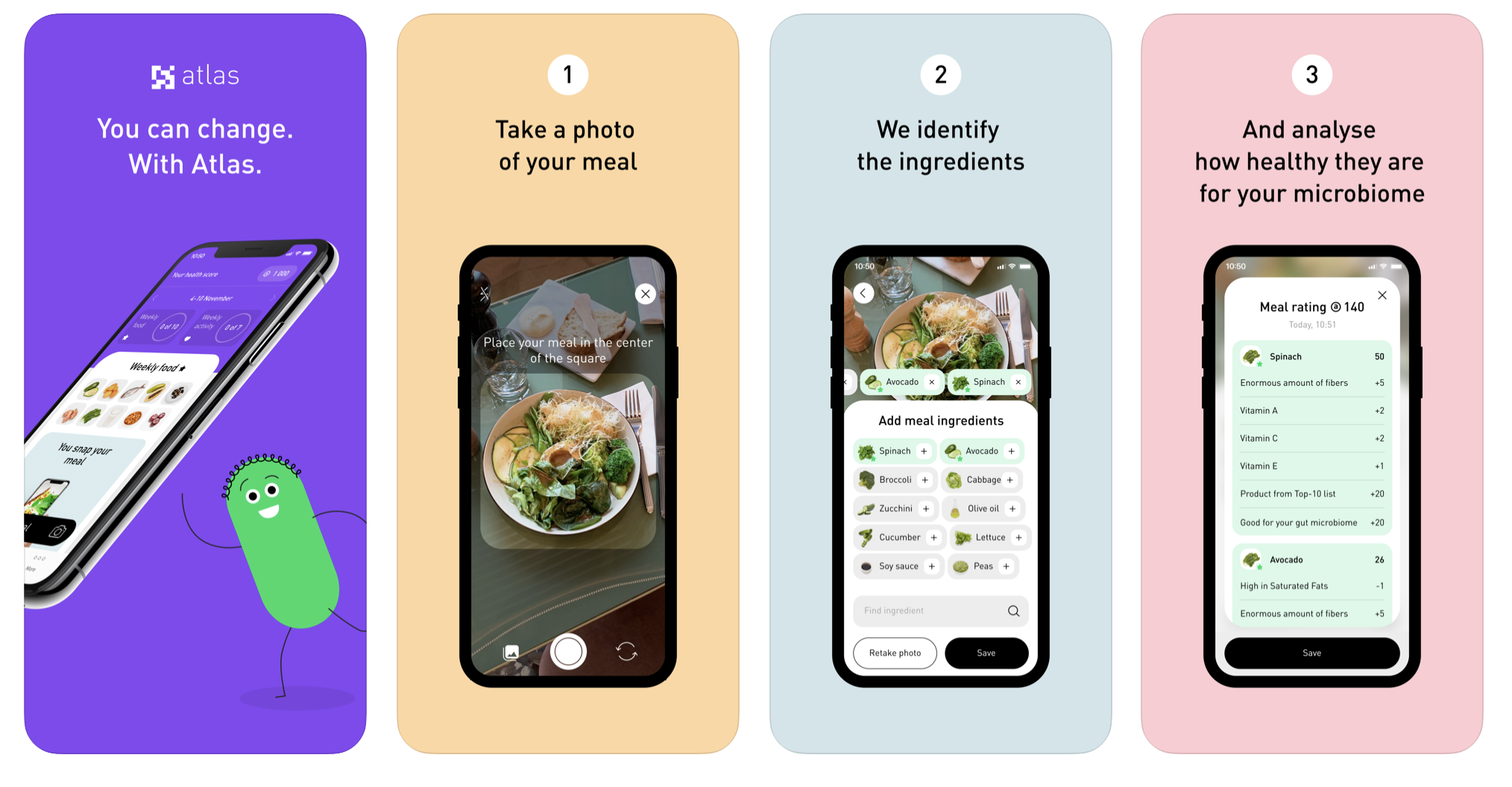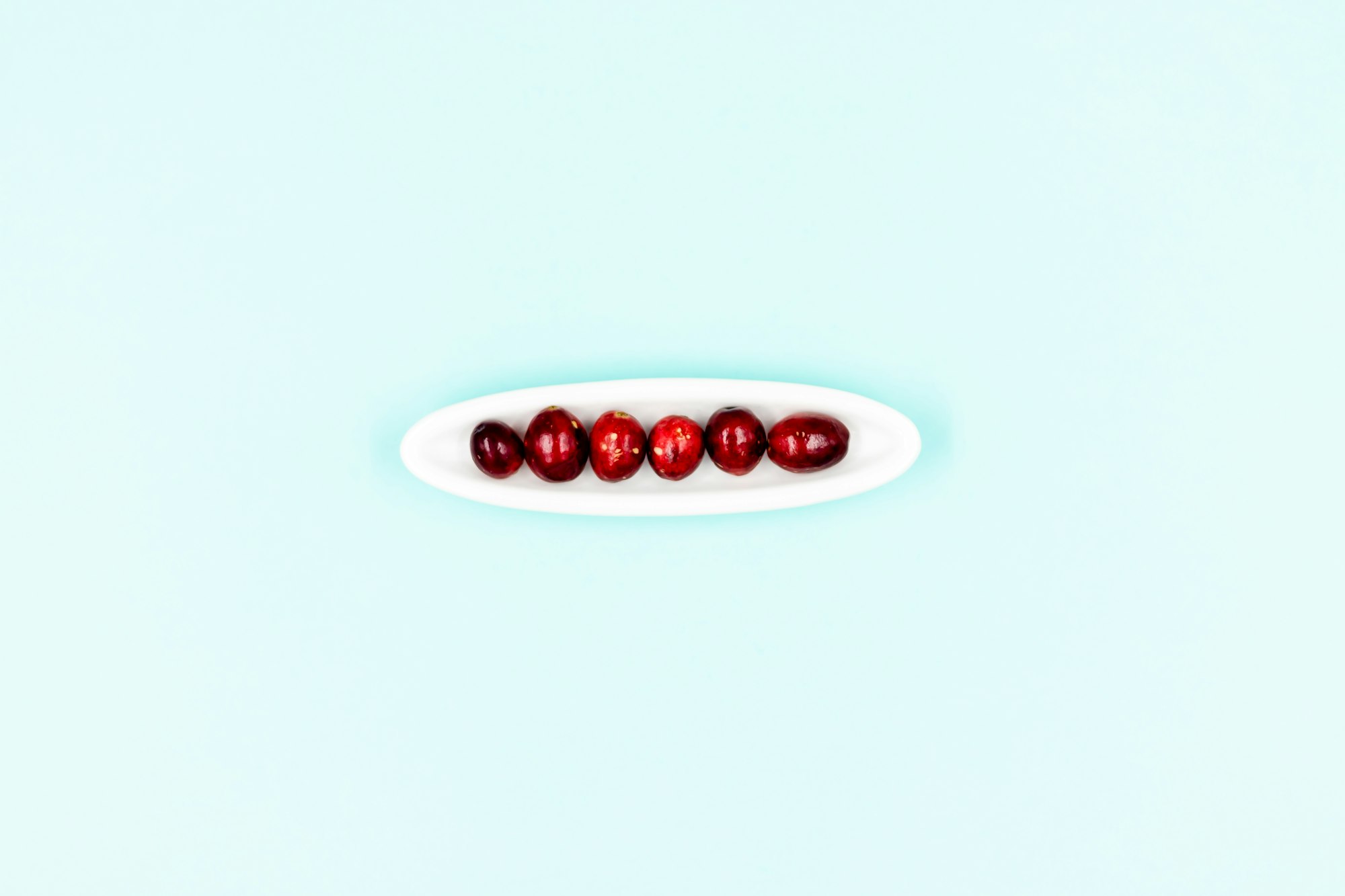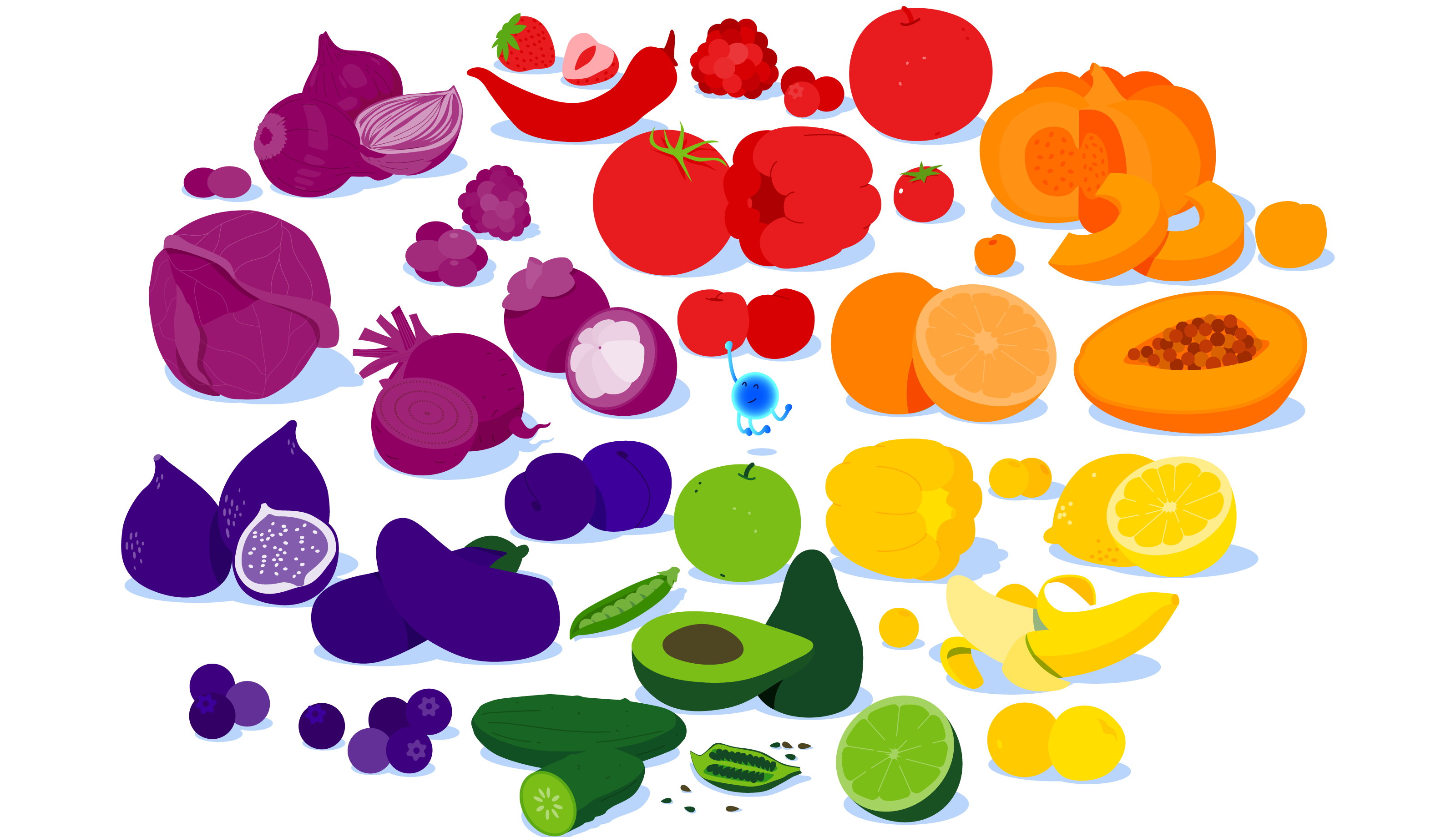The rainbow diet is a health-inspired trend that wants you to eat colourful fruit and vegetables that are red, orange, yellow, green, and purple.
Most diets want you to eat less and suffer more with the end goal of rapid and unsustainable weight loss. Not the rainbow diet! Rather than cutting out food groups, this health-positive diet wants you to add more colour to your food choices.
“Eat the rainbow“ is the mantra, and all you need to do is add more colourful plant foods to your meals. So rather than banning carbs, gluten, fat or meat, you just need to include some vibrant fruit and veg in your weekly diet.
Table of contents
What is a rainbow diet (definition)?
The rainbow diet is not a new idea, but it’s newly popular. The idea behind it is that colourful vegetables and fruit contain specific micronutrients that support your health and combat biological stress with antioxidants and anti-inflammatory molecules.
This type of biological stress affects your body at a cellular level - you probably know it as ”oxidative stress”, which is caused by free radicals. Fortunately, the antioxidants in rainbow diet foods help the body to neutralise free radicals and stop them from damaging your cells.
Free radicals are generated by your metabolism (the sum of life-giving chemical reactions inside your cells) and your environment. Here are some common sources of free radicals in everyday life:
- Mitochondria
- Inflammation
- Exercise
- Cigarette smoke and air pollutants
- Pesticides, radiation, industrial solvents
The rainbow diet nutrients don’t act directly on free radicals. Instead, they prompt your body’s natural antioxidant mechanisms, which increases your natural ability to reduce oxidative stress. It also has a few other great benefits too.
Plant foods are full of fibre, and fibre is what keeps your digestive system running optimally. Plus, fibre and other plant nutrients are prebiotics: food molecules for your gut bacteria that also help keep you healthy.
☝️TIP☝️ These were inspired by amazing scientific research about the rainbow diet by Deanna Minich, that you can read here for free.
How to eat the rainbow
The rainbow diet plan is a simple and easy way to clean up your diet without restricting yourself. The ultimate goal is to add 30+ different colourful fruit and vegetables to your meals every week.
That might sound like a lot, but it’s not really. You just need to plan for one colourful plant food at every meal. Chances are, you’ll probably end up adding more. Fresh and frozen fruit and vegetables are the best options, but in a pinch, canned is better than nothing.
Below, you’ll find a rainbow diet chart for each colour. The rainbow food lists are divided by type: vegetable/fruit. We’ve also included links to our eat the rainbow guides by colour where you can get an in-depth profile of the nutrients by colour.
Track your rainbow diet

You can track your rainbow diet progress with the Atlas Health app on iOS and android. This food diary app uses image recognition tech to identify the ingredients of your meals from a photo, and it tracks your rainbow food goals!
☝️TIP☝️To get the Atlas food diary app for free, you need to take the Atlas Microbiome Test and discover the whole world of bacteria that live in your gut.
Red foods

The red foods of the rainbow diet are rich in antioxidants and anti-inflammatory molecules that prevent inflammation and oxidative stress. As you’ll see below, you don’t need a degree in food chemistry, because all these foods can all be found at the local supermarket.
Red vegetables
These red vegetables are really easy to get your hands on. You could try a rainbow diet breakfast of omelette with red pepper and red onion, or a rainbow diet lunch of open-faced rye sandwiches with smoked salmon and beetroot.
| Red cabbage | Red potato | Red bell pepper |
| Tomato | Beetroot | Red onion |
| Red chicory (radicchio) | Red chard | Red jalapeno pepper |
Red fruit
Red fruit are mouthwatering to look at and to taste thanks to the tart flavour of those healthful plant nutrients. Just add berries to your rainbow diet meal plan or top your morning porridge with pomegranate seeds for an extra boost.
| Apples | Blood oranges | Cherries |
| Cranberries | Lingonberries | Nectarines |
| Pink grapefruit | Pomegranate | Raspberries |
| Red currants | Red pears | Red plums |
| Strawberries | Watermelon |
Orange foods

Orange food has similar phytonutrients to red rainbow foods, like beta-carotene, which give fruit and vegetables a rich orange-red hue. The benefits of orange fruits and vegetables also support reproductive health for men and women.
Orange vegetables
There’s nothing groundbreaking about orange vegetables in the rainbow diet food chart. In fact, you’ve probably eaten some of them already this week. You can turbocharge your intake with delicious pumpkin soups, roasted sweet potatoes, and spices like turmeric.
| Carrot | Orange bell pepper | Pumpkin |
| Turmeric | Sweet potatoes | Yams |
Orange fruits
The rainbow diet food list of orange fruits is also inspiring and seasonal. Add cantaloupe and fresh apricots to your diet in summer, and citrus and persimmon in winter to boost your body’s natural antioxidant mechanisms.
| Apricots | Blood orange | Cantaloupe |
| Kumquat | Mandarine | Mango |
| Nectarine | Oranges | Papaya |
| Passionfruit | Peach | Persimmon |
Yellow foods

Yellow foods are particularly good for your digestive tract. They contain prebiotics that encourage your gut bacteria to produce short-chain fatty acids – special molecules that nourish the cells of your gut.
Yellow vegetables
Put some sunshine in your belly with these cheerful yellow vegetables of the rainbow diet. Try some spiralised squash instead of pasta, or even a simple baked potato topped with some other lovely rainbow foods.
| Corn | Ginger |
| Potatoes (Yukon) | Bell pepper (yellow) |
| Onions (yellow) | Squash (acorn, butternut, summer, winter) |
Yellow fruit
Yellow rainbow fruit like apples and Asian pears are excellent snack options. You can also diversify your palate with rainbow diet recipes for yellow foods, like a vegan pineapple “ice-cream” that uses a frozen banana as a base.
| Apples (Golden Delicious) | Asian Pears | Bananas |
| Lemons | Pineapple | Starfruit |
Green foods

Green foods of the rainbow diet contain nutrients that are particularly good at protecting your cardiovascular system from oxidative stress. In particular, oxidative stress has been linked to high blood pressure, atherosclerosis (the narrowing of your arteries), and heart disease.
Green vegetables
There are so many green rainbow vegetables that you are literally spoilt for choice. With a plethora of peas and leafy greens, not to mention avocado, broccoli, and artichokes, there’s definitely something in there for everyone.
| Artichokes | Avocado | Bean sprouts |
| Bell peppers | Broccoli | Cabbage |
| Celery | Edamame | Green beans |
| Green peas | Beet greens | Kale | Green chard | Mustard greens | Spinach | Mustard greens | Okra | Watercress |
Green fruit
If you drink a cup of green tea and eat kiwis, then you’re already on your way to achieving your rainbow food goals. Pears, limes, and olives also count as green rainbow foods that will titillate your taste buds.
| Green tea | Green apples | Kiwi |
| Limes | Olives | Pears |
Purple-blue foods

Purple and blue rainbow foods share the same types of plant nutrients, which also give them their unique colour. Now, you might be wondering where on earth you’ll find blue and purple vegetables and fruit, but when you see our list, you’ll change your mind.
Purple vegetables
Start your dinner off with some beetroot-infused hummus and baba ghanoush for a prebiotic rainbow food twist on traditional Mediterranean dips. Roast some turnips, purple potatoes, and serve with purple cauliflower for your Sunday roast, and you’re sorted!
| Aubergine | Beetroot | Purple bell peppers |
| Purple kale | Purple carrots | Purple cauliflower |
| Purple potatoes | Turnips |
Purple fruit
The rainbow food chart of purple fruit is short and sweet. You should have no trouble getting your hands on these beautiful berries, drupes, and grapes. They’re delicious, which makes them a lovely and easy addition to your rainbow food diet!
| Blackberries | Blueberries | Figs |
| Plums/prunes | Purple grapes | Raisins |
Don’t forget to check out our in-depth guide to rainbow foods by colour to get the skinny on the rainbow food diet benefits by colour and nutrient. These articles are also brimming with hand-picked recipes that are healthy and delicious.
















